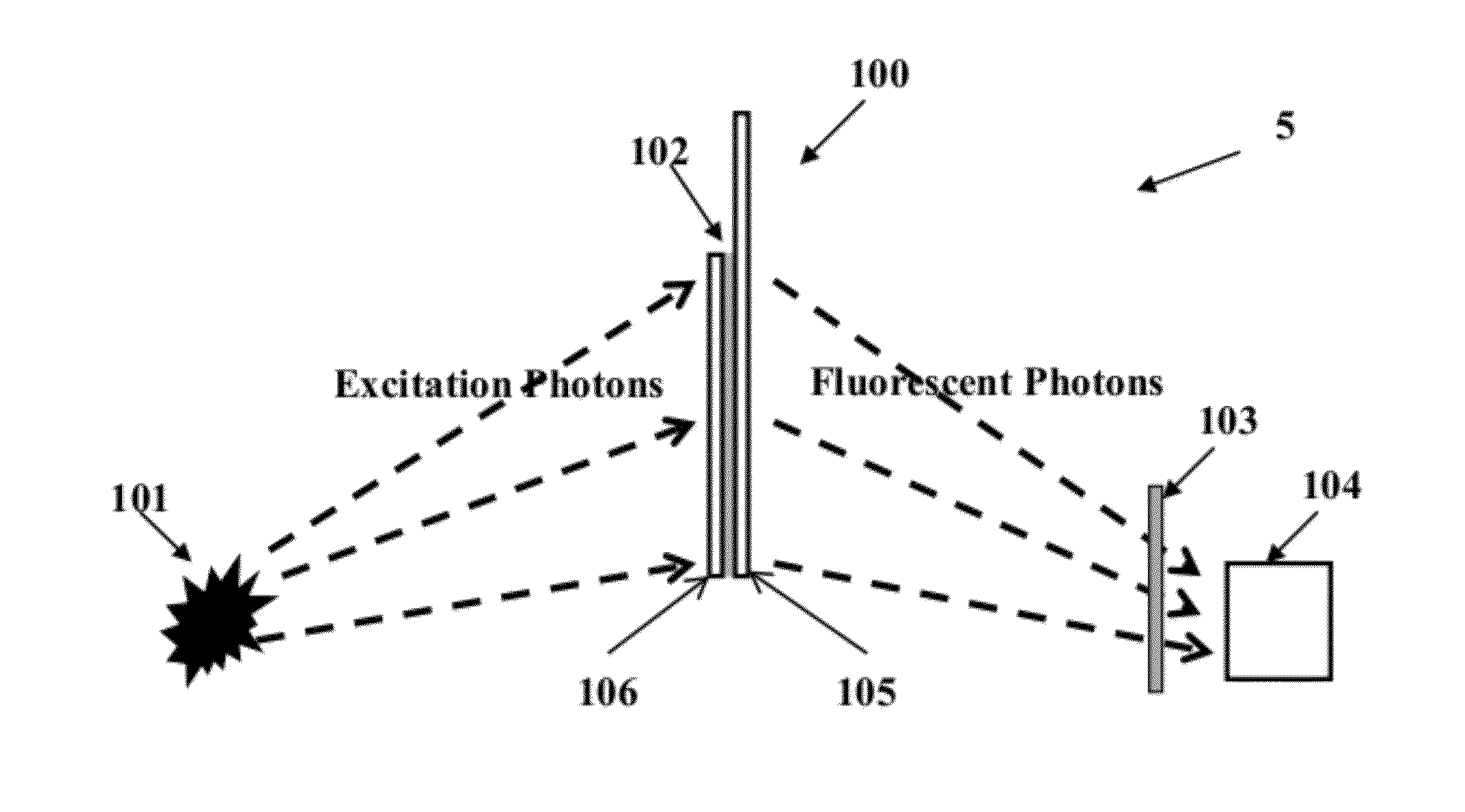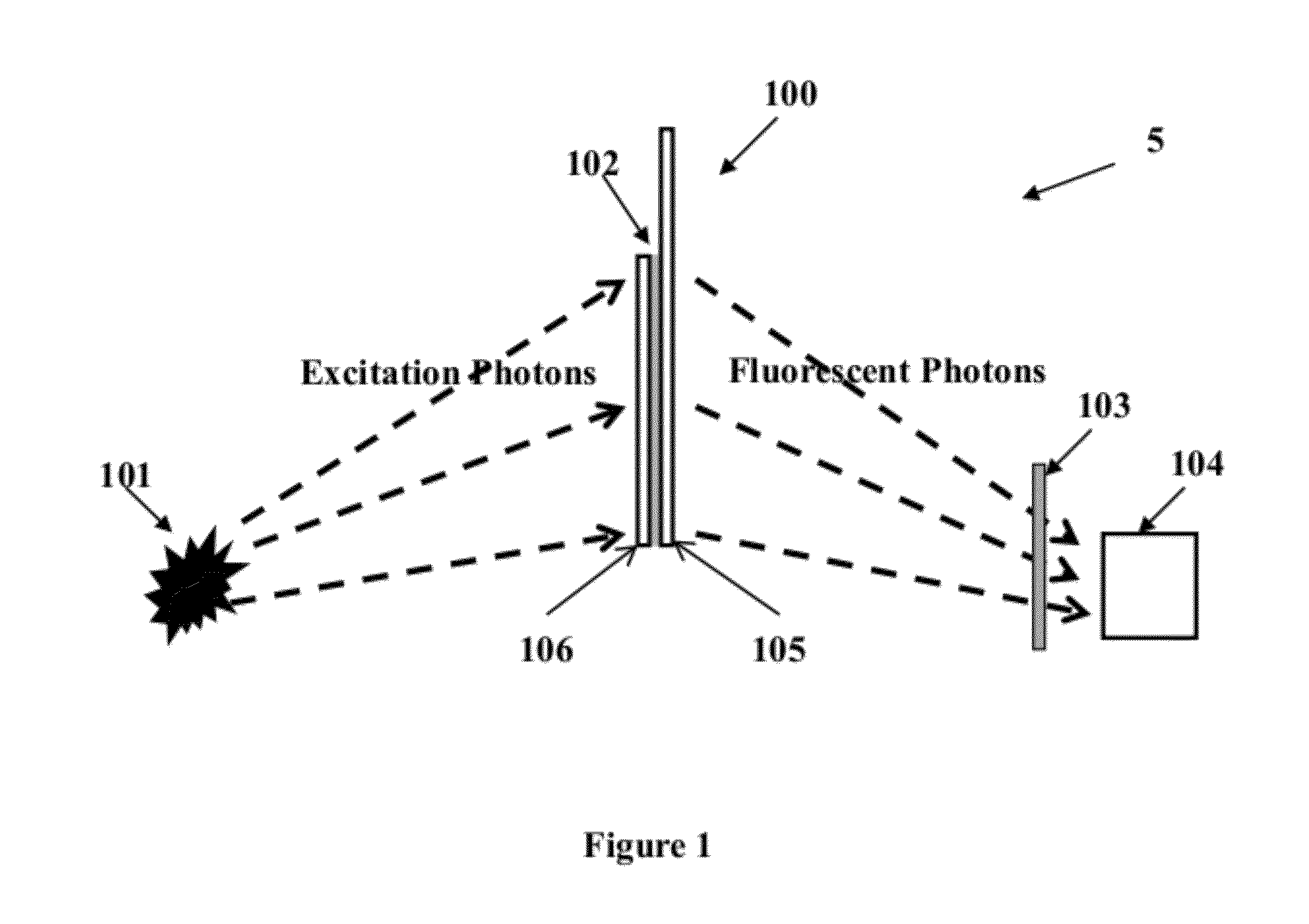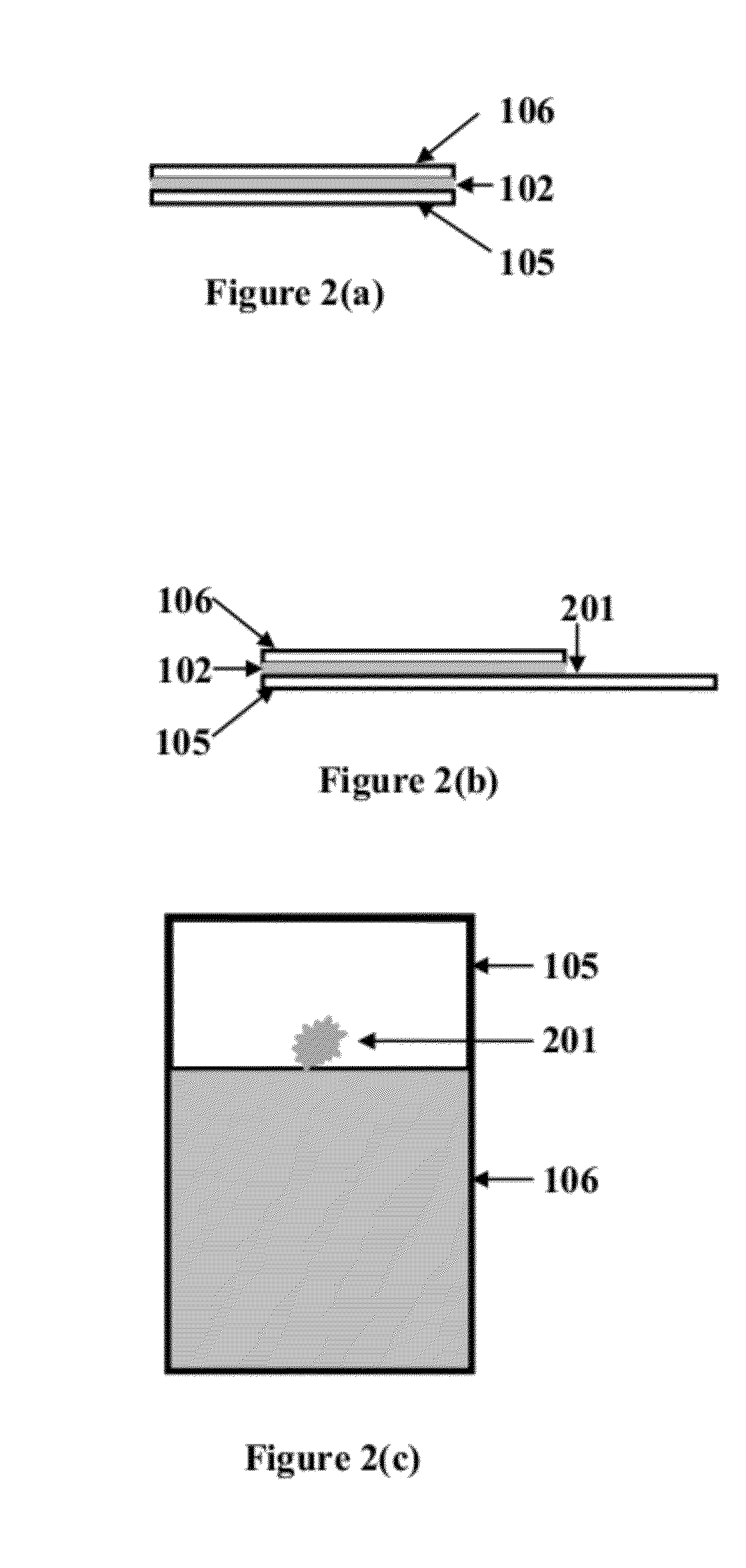[0007]The invention includes of a disposable thin sample holder and an analytical instrument. The sample holder is distinguished by having all the chemicals required for an analysis stored within it during its manufacture. This eliminates the need for multiple bottles of reagents, and the time and equipment needed for their mixing prior to an analysis. Even if the dispensation of those chemicals and their handling is done by a
machine, the
reagent bottles still have to be bought, stored properly and put in place within a metering and mixing
machine, which is a complex assemblage of tubes, pumps and other components. The chemicals stored within the holder are inside of a water-
soluble polymer. This protects them and preserves their viability. The
polymer dissolves upon sample
insertion, freeing the
reagent molecules, which quickly mix with the sample by
diffusion. With this invention, the user has only to open the sealed envelope containing the holder, insert the sample, place the holder into the instrument also disclosed here, and push the
start button on the instrument. The quantitative analysis is accomplished automatically and the answer is immediately available on a display or sent by
wireless means to a
personal computer. The procedure takes only a few minutes. This contrasts with analysis times of half an hour or more in the large current instruments, not counting time for sample transfer to a laboratory, nor the time and expense of accounting for samples.
[0008]A summary of other advantages of the new sample holder included the following points. Small samples, less than one or two drops, are sufficient due to the thin nature of the holder. There is no need for pre-concentration, separations or sample mixing. Loading of the sample into the holder exploits natural
capillary action without the need for pumps. The holder has been shown in tests to provide a very good
signal-to-
noise performance. The thin character of the holder permits the use of samples, notably blood, that are too opaque for use in conventional cuvettes. It also reduces
photobleaching of the sample and
reagent materials. Diverse means can be used to obtain analytical specificity using the holder, including enzymes,
DNA,
RNA, antibodies, aptamers and other recognition molecules, with enzymes the preferred approach. The holder also permits use of a wide variety of transduction methods that enable the measurement of signals dependent on the prior recognition step.
Optical fluorescence is a preferred approach to transduction.
[0009]The sample holder is very adaptable. It has been effectively demonstrated for analysis of
uric acid. High levels of
uric acid in the body can lead to
gout and pre-
eclampsia. They also appear during
chemotherapy, due to tumor
lysis, and be life threatening on the time scale of hours. There are tens of millions of patients in the world that are candidates for uric acid analysis, if appropriate commercial analyzers for that molecule were available, could be used at the point-of-care and were cost effective. Loading the sample holder with other reagents specific to a desired target
analyte molecule will permit quantification of a wide range of clinically important substances. Enzymes for diverse target molecules are available. The holder can also be used for either absorption or
light scattering measurements, in addition to
fluorescence. This greatly broadens the range of analytical targets. For example,
light scattering can be used to quantify
Cystatin C, the best biomarker of
kidney health.
[0010]The analytical instrument that is part of this invention exploits modern miniature and low power optical components that are not part of current commercial systems. Because of the use of such components, this instrument can be battery operated, in contrast to current systems. Hence, it is small, and hence easily portable, about the size of a white board eraser. There are few limitations on the locations where the invention can be used because it is small, battery powered and easily portable.
[0011]The analytical instrument has a number of advantages, including the fact that it is compact, of a size well matched to the handling of diverse samples, neither too large nor small. The instrument can be used on a table or other surface, or else hand-held in a building, vehicle, the field or other location. There are many alternative designs for the optical, electronic and mechanical aspects of the instrument. It can be used without ancillary optical components, such as lenses or mirrors. The performance of the instrument is well matched to the requirements for the analysis of clinical and other samples, with adequately
low noise and good signals. The instrument will cost substantially less than current desktop analyzers for performing the same analyses.
 Login to View More
Login to View More  Login to View More
Login to View More 


